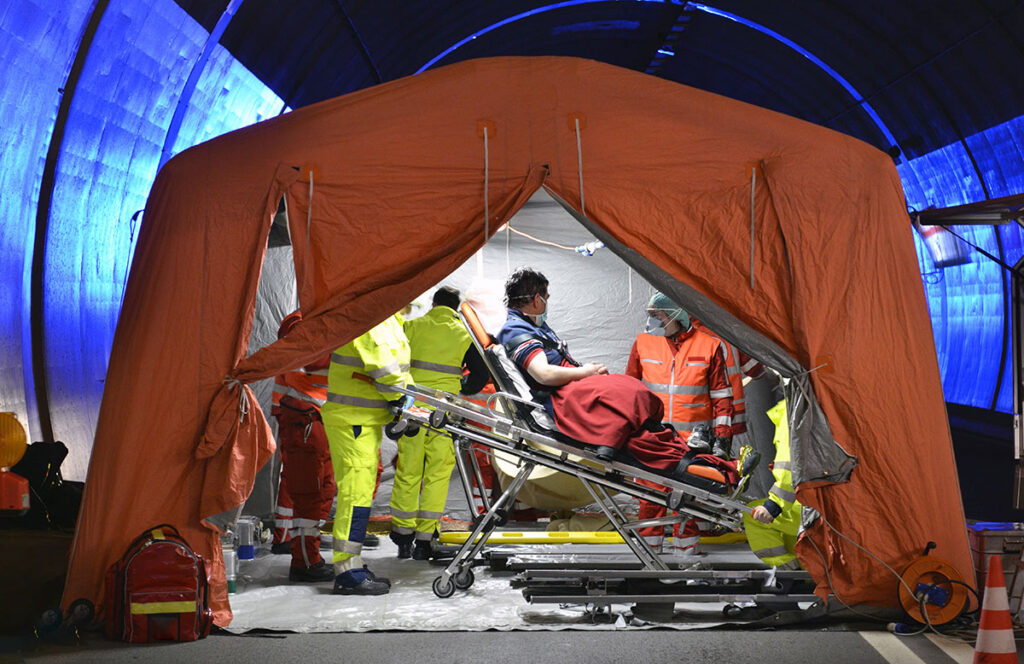In a recently published perspective article in Health Science Reports, public health researchers from Tanzania, Nigeria, and Cameroon argue for a transformative shift in mass casualty incident (MCI) response: the systematic integration of postexposure prophylaxis (PEP) into emergency preparedness protocols. As MCIs—ranging from road traffic accidents to natural disasters—overwhelm health systems worldwide, the authors emphasize the urgent need to address the often-neglected risk of bloodborne pathogen transmission among casualties and first responders.
The Case for PEP in Emergency Response
PEP, particularly against HIV, hepatitis B and C, and other infectious agents, is a time-sensitive intervention proven to prevent disease following exposure. While its use is well-established in healthcare and occupational settings, the authors argue that MCIs—where blood and body fluid exposures are common—are often overlooked as contexts for routine PEP administration.
When delivered promptly (ideally within 2 hours, and no later than 72 hours post-exposure), PEP can reduce the risk of HIV transmission by over 80%. Yet during MCIs, lifesaving trauma care typically takes precedence over preventive interventions. This gap represents a missed opportunity to prevent longer-term infectious disease burdens that silently emerge after the chaos subsides.
Mass Casualty Events and Overlooked Risks
Crash victims and trauma patients are particularly vulnerable to inadvertent exposure to infectious agents during triage, surgery, and blood transfusion. In low- and middle-income countries—where MCIs are frequent and healthcare resources strained—routine screening, isolation, and prophylactic care are often infeasible. Moreover, emergency departments may lack standardized protocols or training to assess PEP eligibility in high-pressure situations.
The authors highlight that while global HIV prevention strategies exist, implementation is inconsistent, especially in emergency settings. First responders and clinicians may lack awareness or operate under outdated assumptions about when PEP is warranted.
Recommendations for Preparedness and Prevention
To close this critical gap, the article calls for the following actions:
Formal Integration into Protocols: Emergency response guidelines should explicitly include PEP for bloodborne pathogen exposures, especially HIV.
Training and Awareness: First responders, emergency clinicians, and trauma teams must be trained to recognize potential exposures and initiate PEP when indicated.
Surveillance and Risk Mapping: Establish surveillance systems to monitor exposure events and identify high-transmission-risk settings.
Resource Allocation: Ensure availability of personal protective equipment (PPE), point-of-care test kits, and PEP medications in trauma-prone areas.
Blood Safety Infrastructure: Develop reliable blood bank networks capable of rapidly supplying screened blood products in emergencies.
These interventions are not only feasible but also cost-effective in reducing downstream healthcare burdens and improving overall emergency resilience.
Why This Matters for Public Health and National Security
The integration of PEP into mass casualty protocols transcends clinical benefit. In an era of rising disaster frequency, global travel, and emerging infectious threats, unmitigated secondary infections pose both local and transboundary risks. Proactively safeguarding first responders and exposed civilians from preventable infections is a matter of national interest, particularly for governments aiming to strengthen biosecurity and reduce health system strain.
In resource-limited regions with high HIV prevalence, such integration could dramatically cut transmission rates and reduce long-term treatment costs. More broadly, it reflects a shift toward holistic emergency planning—where prevention, not just immediate survival, is central to response frameworks.
Strengthening Bioterrorism and CBRNE Preparedness
The systematic incorporation of PEP into emergency response protocols also enhances national and global preparedness for bioterrorism and CBRNE (chemical, biological, radiological, nuclear, and explosive) events. In these high-risk scenarios, responders and civilians may face deliberate or accidental exposure to infectious agents such as HIV, hepatitis viruses, anthrax, or tuberculosis. PEP serves as a crucial line of secondary defense—mitigating the health impact of biological threats when used promptly and appropriately.
Ensuring that frontline personnel are trained to assess risk and administer PEP under such conditions not only limits disease transmission but also supports continuity of operations and public trust during complex emergencies. As frameworks evolve, integrating PEP into MCI and CBRNE protocols is a practical and scalable way to reinforce response systems against both conventional and unconventional threats.
A Strategic Imperative for Modern Emergency Response
Incorporating postexposure prophylaxis into emergency response frameworks is no longer optional—it is a strategic imperative. PEP can substantially reduce post-crisis morbidity and mortality, particularly in mass casualty events where bloodborne pathogen exposure is common and underrecognized.
As the global landscape of public health emergencies expands to include not only natural disasters and transportation accidents but also bioterrorism and CBRNE threats, preparedness efforts must evolve accordingly. Equipping healthcare systems with the protocols, training, and resources needed to deploy PEP effectively will enhance resilience, reduce long-term health burdens, and protect populations when it matters most.
Further Reading:
WHO: Guidelines on Post-Exposure Prophylaxis for HIV
Rural Health Information Hub: Emergency Preparedness and Response for Mass Casualty Incidents
CDC: Medical Response to Mass Casualties in Radiation Emergency
CDC: Clinical Guidance for PEP
Edward M, Hellar A, Onyeaghala C, Ogunfolaji O. Enhancing Emergency Preparedness: A Call to Incorporate Postexposure Prophylaxis in Mass Casualty Protocols. Health Science Reports. 23 June 2025


